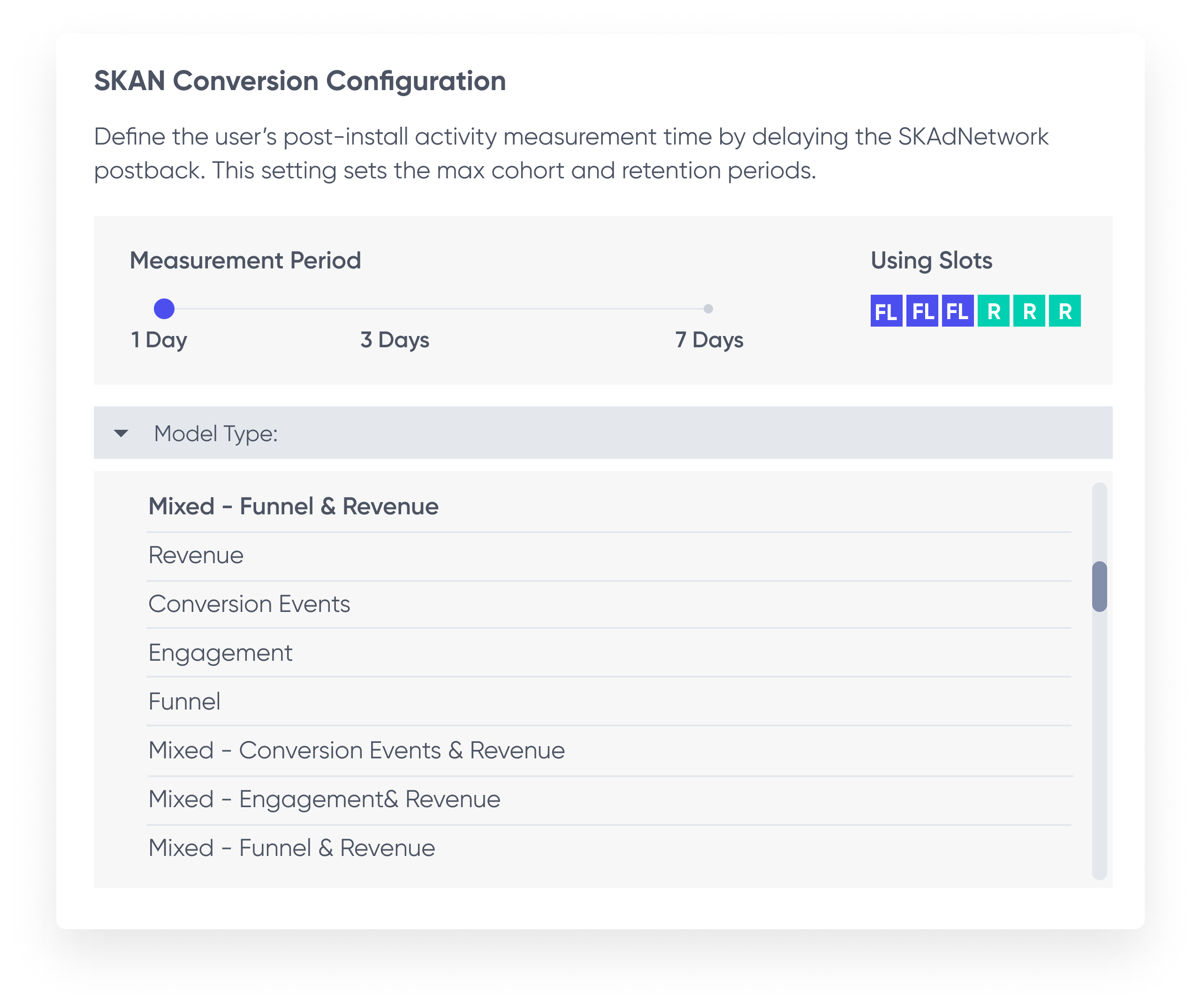Mixed Conversion Models – level up your model & better predict SKAN revenue
For most marketers, revenue is a crucial metric. Understanding how much revenue a user is spending on in-app purchases is essential to understanding how successful their campaigns are, i.e., their SKAN (SKAdNetwork) ROI and user LTV.
Unfortunately for most, tracking revenue is complicated with SKAdNetwork. While revenue is typically really informative of campaign performance and is a reliable metric to use for forecasting, relying solely on revenue will, in most cases, give you a fractional view of SKAN performance.
SKAdNetwork, your reporting nightmare.
Everyone is familiar with the problems presented with SKAdnetwork—it’s a hot mess and logistical nightmare for app marketers, developers, and data scientists alike. We covered a lot of the challenges in our last blog about server-to-server support for conversion models.
By design, the conversion model measurement period has an opportunity cost that naturally limits marketers to a short 1-3 day window to measure user engagement signals. Additionally, marketers face barriers like Facebook’s restrictive optimization windows (learn more about Facebook’s SKAdNetwork integration here) and other ecosystem adoption challenges that pressure marketers to use a 24hr measurement period – which is an extremely limited amount of time to measure engagement signals. The longer the measurement period, the longer you wait for information. So this leaves the majority of marketers with just 24hrs to capture revenue, and that’s troubling.
What can you get in 24hrs?
SKAdNetwork reports back just one conversion value representing all the encoded information from a user’s app engagement within the designated measurement period. Verticals like on-demand apps are more likely to trigger a revenue event shortly after an install. Still, for many app verticals, users have a longer engagement curve. It’s hard to trust revenue as an accurate indicator of SKAN campaign performance if you can only analyze data from the first 24hrs after an install. Running a revenue model with a restrictive 24 hour measurement period will more often than not result in many reported zeros for conversion values – meaning zero user revenue was captured.
Just because a user doesn’t spend money in the first 24hs after installing, it doesn’t mean the user isn’t valuable. It just means we need to look for early growth KPIs.
The dilemma now is deciding which conversion model is ideal for your app; Conversion Events, Engagement, Revenue, or Funnel. While all four of these conversion models are individually strong and suitable for different use cases, they each have a singular focus and will narrow SKAdNetwork’s reporting to that specific type of post-install engagement event information. For a marketer that relies on revenue reporting, deciding which model type to use can have big trade-offs.

Let’s walk through the tough decisions marketers have historically had to endure. We’ve seen many marketers weighing these choices for the Conversion Event model, which enables marketers to capture those early user engagement events to signal future user value. This choice prioritizes early growth signals over the risk of selecting a Revenue model and not having any revenue events occur, resulting in zero insights into the user. This lose-lose decision tree is an excellent example of the trade-offs, as these marketers are gaining those early insights. Still, they’re also losing out on any revenue amounts for revenue events that may occur, which will ultimately impact analysis and optimizations due to an incomplete and less accurate understanding of SKAN performance.
Say goodbye to the trade-offs.
Luckily, those trade-offs are now a thing of the past. Singular has released support for Mixed Models, which enables marketers to use the Revenue model in conjunction with one of our other existing model types, resulting in the addition of three new mixed models:
- Conversion Events and Revenue
- Engagement and Revenue
- Funnel and Revenue.
By using one of Singular’s Mixed Models, marketers can access two optimization levers instead of limiting themselves to one. Marketers can have the best of both worlds by capturing both the early growth KPIs and the less frequently occurring but highly valuable revenue events. Running a Mixed Model will also enable marketers to continue to run Facebook VO campaigns (value optimized campaigns) while still benefiting from the conversion event optimization levers.
Stay up to date on the latest happenings in digital marketing


